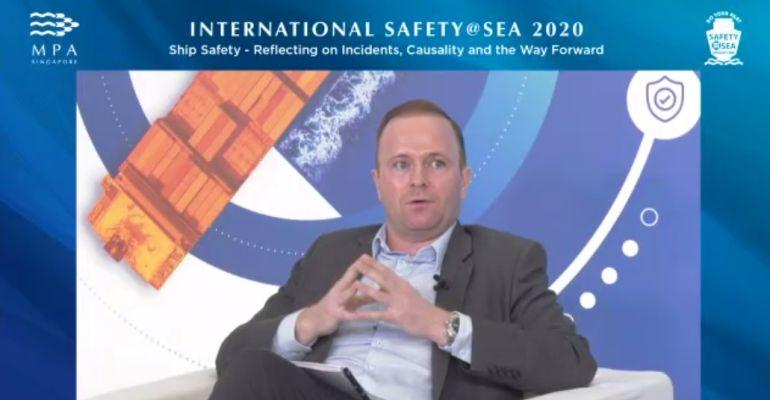Accidents during ship operations are often attributed to human errors, or more specifically negligence on the part of seafarers. “Owners should take a more holistic approach, that means to look at safety from ashore as well, not just on seafarers,” said Jacob Damgaard, loss prevention manager at Britannia P&I.
“Was it that the procedure to follow is too complex, too difficult and too long? Several investigations have shown that accidents happened because the procedure was not followed properly. And when you see a long and complex procedure, it can lead to cutting of corners,” he said.
Damgaard also advised companies against enforcing a procedure on top of another procedure, and reviews should take place regularly to ensure that procedures are actually relevant rather than them becoming a “paper monster” built up over the years.
Capt. Vijay Cherukuri, general manager, HSEQA, Executive Ship Management, shared that seafarers tend to have a ‘onboard culture’ and this social process or normalisation can be tapped on to emphasise on safety culture.
Capt. Kevin Wong, port master of the Maritime and Port Authority of Singapore (MPA), called for greater involvement from the commercial and chartering divisions of companies to join in conversations on safety, as it is in the interest of the industry as a whole to work closer together.
For Singapore, one of the world’s busiest ports, the push for safety has seen a drop in the number of major incidences over the past decade, according to Wong. He shared that there were 0.8 incidences per 100,000 movements in 2009, compared to 0.12 incidences per 100,000 movements in 2019.
A live poll conducted during the webinar asked which area would stakeholders wish to see some fundamental changes in the next decade for safe shipping, and 57% wanted more commitment from shipping companies, 39% asked for review of crew competency framework, and 5% saw the need for an increase in regulations.
Copyright © 2024. All rights reserved. Seatrade, a trading name of Informa Markets (UK) Limited.
Add Seatrade Maritime News to your Google News feed.  |

